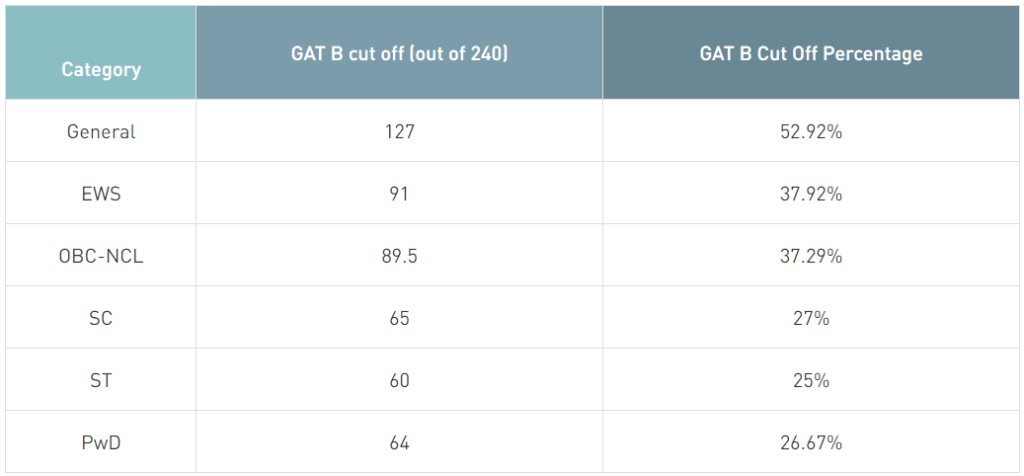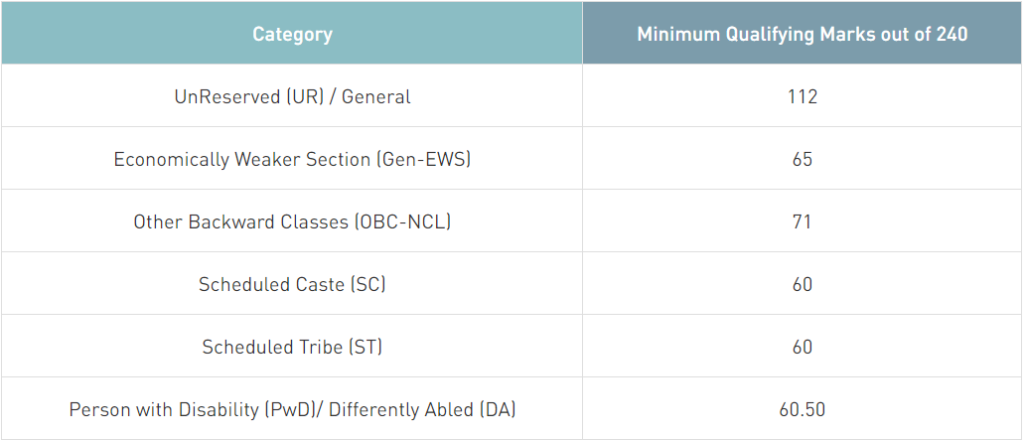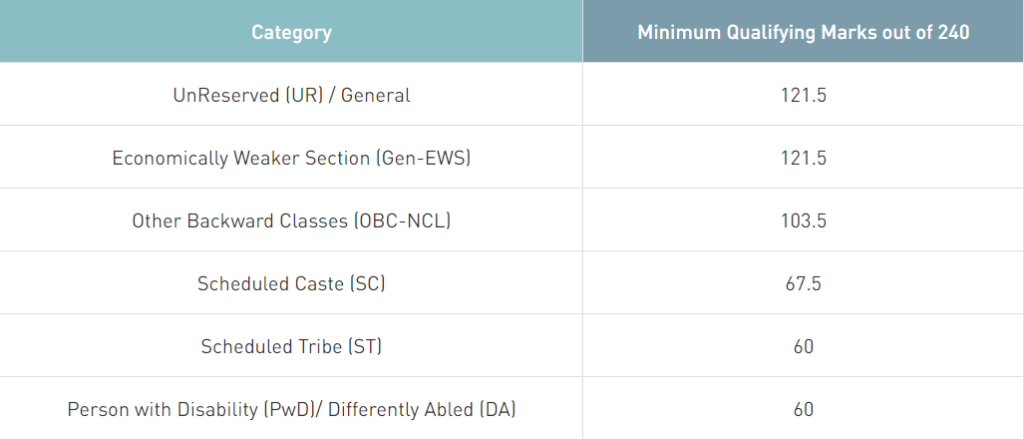Introduction to GAT-B
The Graduate Aptitude Test – Biotechnology (GAT-B) is a national-level entrance exam conducted annually to help students gain admission to postgraduate programs in biotechnology and allied fields. For students aspiring to carve a niche in biotech, GAT-B is often the gateway to prestigious institutions like the Regional Centre for Biotechnology (RCB), Jawaharlal Nehru University (JNU), and other top institutes offering biotechnology courses.
What is the GAT-B Cut-off?
The GAT-B cut-off refers to the minimum score a candidate must achieve to qualify for admission into their desired program. It varies each year based on several factors, including the number of applicants and the difficulty level of the exam. The cut-off is crucial because it helps filter out students based on merit, ensuring that only the top candidates secure admissions.
Factors Affecting GAT-B Cut-off
- Number of Applicants: The more students that appear for the exam, the higher the cut-off tends to be. A larger pool of candidates increases competition.
- Difficulty Level: If the exam is particularly tough one year, the cut-off might be lower since fewer candidates will score high marks.
- Number of Seats Available: The availability of seats across institutions also plays a critical role. If fewer seats are available, the cut-off will be higher.
- Category-wise Distribution: Reserved categories such as OBC, SC/ST, and EWS have different cut-off marks based on the reservation system.
How to Calculate the GAT-B Cut-off?
The GAT-B cut-off is calculated based on a normalization process that ensures fairness across different exam sessions if they are conducted in multiple shifts. Percentiles are used to rank candidates, with the highest score generally being set at the 100th percentile.
Importance of Previous Year Cut-offs
Looking at previous years’ cut-offs gives students an idea of the range they need to aim for. While each year might differ slightly, the general trends in cut-offs help predict what might happen in the current year. This makes past cut-offs an important benchmark for students as they prepare.
GAT-B Cut-off 2024

GAT-B Cut-off 2023

GAT-B Cut-off 2022

GAT-B Cut-off 2021

GAT-B Cut-off Trends Over the Years
The cut-off trends for the General category have seen slight variations over the years, depending on the factors mentioned earlier. Reserved categories like OBC, SC/ST, and EWS usually have lower cut-off marks due to reservation policies, but the trends here are also influenced by competition.
Detailed Syllabus for Biotechnology
Let’s break down the topics you’ll encounter in the Biotechnology section:
Cell Biology
Cell Biology is one of the fundamental subjects in biotechnology. It involves the study of the structure and function of cells, the basic building blocks of life.
Key Concepts in Cell Biology
- Structure and functions of prokaryotic and eukaryotic cells
- Cellular organelles and their functions
- Cell signaling and communication
Topics Covered in Cell Biology
- Cell division and its regulation
- Cellular transport mechanisms
- Apoptosis and cell cycle control
Biochemistry
Biochemistry delves into the chemical processes within and related to living organisms. It’s one of the key areas of study in GAT-B.
Important Biochemistry Topics
- Enzymes and their kinetics
- Metabolism (Carbohydrates, Proteins, Lipids)
- Biomolecules and their functions
- ATP synthesis and energy metabolism
Molecular Biology and Genetics
This area focuses on the molecular mechanisms that govern cellular functions and heredity.
Important Genetic Topics
- DNA replication, transcription, and translation
- Genetic mutations and their consequences
- Gene regulation in prokaryotes and eukaryotes
- Mendelian genetics
Immunology
Immunology is a critical part of the GAT-B syllabus. It deals with the immune system, its functions, and its responses to pathogens.
Key Immunology Concepts
- Innate and adaptive immunity
- Antigen-antibody interactions
- Vaccination and immune responses
- Immunological memory
Microbiology
Microbiology explores microorganisms like bacteria, viruses, fungi, and their interactions with the environment and hosts.
Core Microbiology Concepts
- Microbial growth and nutrition
- Pathogenic microorganisms
- Antibiotic resistance and microbial control
Bioprocess Engineering and Biostatistics
Bioprocess engineering deals with the development and design of processes for large-scale biological production, while biostatistics focuses on applying statistics to biological experiments.
Key Areas in Bioprocess Engineering
- Fermentation technology
- Scale-up processes
- Bioreactors and their design
- Statistical methods in biology
Plant and Animal Biotechnology
This part of the syllabus covers advancements in the genetic manipulation of plants and animals.
Plant Biotechnology Syllabus
- Plant tissue culture techniques
- Genetic engineering of plants
- Transgenic plants
Animal Biotechnology Syllabus
- Cell culture techniques
- Cloning and transgenesis
- Gene editing technologies in animals
Bioinformatics
Bioinformatics is a growing field that merges biology, computer science, and information technology to analyze biological data.
What to Study in Bioinformatics
Protein structure prediction
Impact of Exam Difficulty on Cut-off
Biological databases
Sequence alignment algorithms
If an exam is especially tough, the cut-off may decrease as fewer students score high marks. Conversely, an easier exam may lead to higher cut-offs. For instance, in 2022, a tougher set of questions led to a slight dip in the General category cut-off compared to 2021.
Category-wise Cut-off Distribution
- General: This category generally has the highest cut-off, reflecting intense competition.
- OBC: OBC students typically have a moderately lower cut-off than the General category.
- SC/ST: These categories have the lowest cut-off, as mandated by government reservation policies.
- EWS: Candidates from economically weaker sections fall in between General and OBC categories.
How to Approach the GAT-B Exam Based on Cut-off Predictions?
When preparing for GAT-B, understanding the cut-off trends is crucial. Allocate time based on the weightage of different sections and make sure to aim for a score above the expected cut-off to ensure safety.
Common Mistakes Students Make While Estimating Cut-off
- Over-reliance on previous years: While trends matter, students should not base their expectations solely on past data.
- Ignoring category differences: Many students forget that each category has a distinct cut-off.
Expected GAT-B 2024 Cut-off Prediction
Given the trends and factors, the expected cut-off for the General category in 2024 might fall between 85-95 marks, while reserved categories like OBC could see cut-offs around 70-80 marks. SC/ST cut-offs might hover around 50-60 marks.
How to Stay Updated with GAT-B Cut-off Announcements
Check official sources like the National Testing Agency (NTA) website or the respective institute’s notifications. Many students also follow educational forums and social media groups for real-time updates.
What to Do If You Miss the Cut-off?
If you don’t clear the cut-off, don’t be disheartened. Consider preparing for the next attempt or exploring alternative options like private institutes or integrated courses.
Preparation Tips for GAT-B 2025 Based on Cut-off Trends
- For High Scorers: Focus on mock tests and time management to maintain accuracy.
- For Repeaters: Identify weaknesses from the last attempt and strategize accordingly.
Conclusion
The GAT-B cut-off plays a pivotal role in determining your eligibility for top biotechnology programs. By understanding the trends, calculating your chances, and preparing strategically, you can aim to surpass the cut-off and secure admission into a prestigious institution.
FAQs
- What is the expected GAT-B cut-off for 2024?
The expected cut-off for the General category in 2024 may range between 85-95 marks. - How is the GAT-B cut-off determined for different categories?
It is based on the percentile system and normalization, taking into account reserved category norms. - Is the GAT-B cut-off the same for all participating institutes?
No, it may vary slightly depending on the institute. - Can the GAT-B cut-off change after the exam results are out?
Generally, the cut-off remains stable, but it might vary in rare cases based on final seat availability. - How can I improve my chances of clearing the GAT-B cut-off?
Focus on conceptual clarity, time management, and practice with previous years’ papers.

